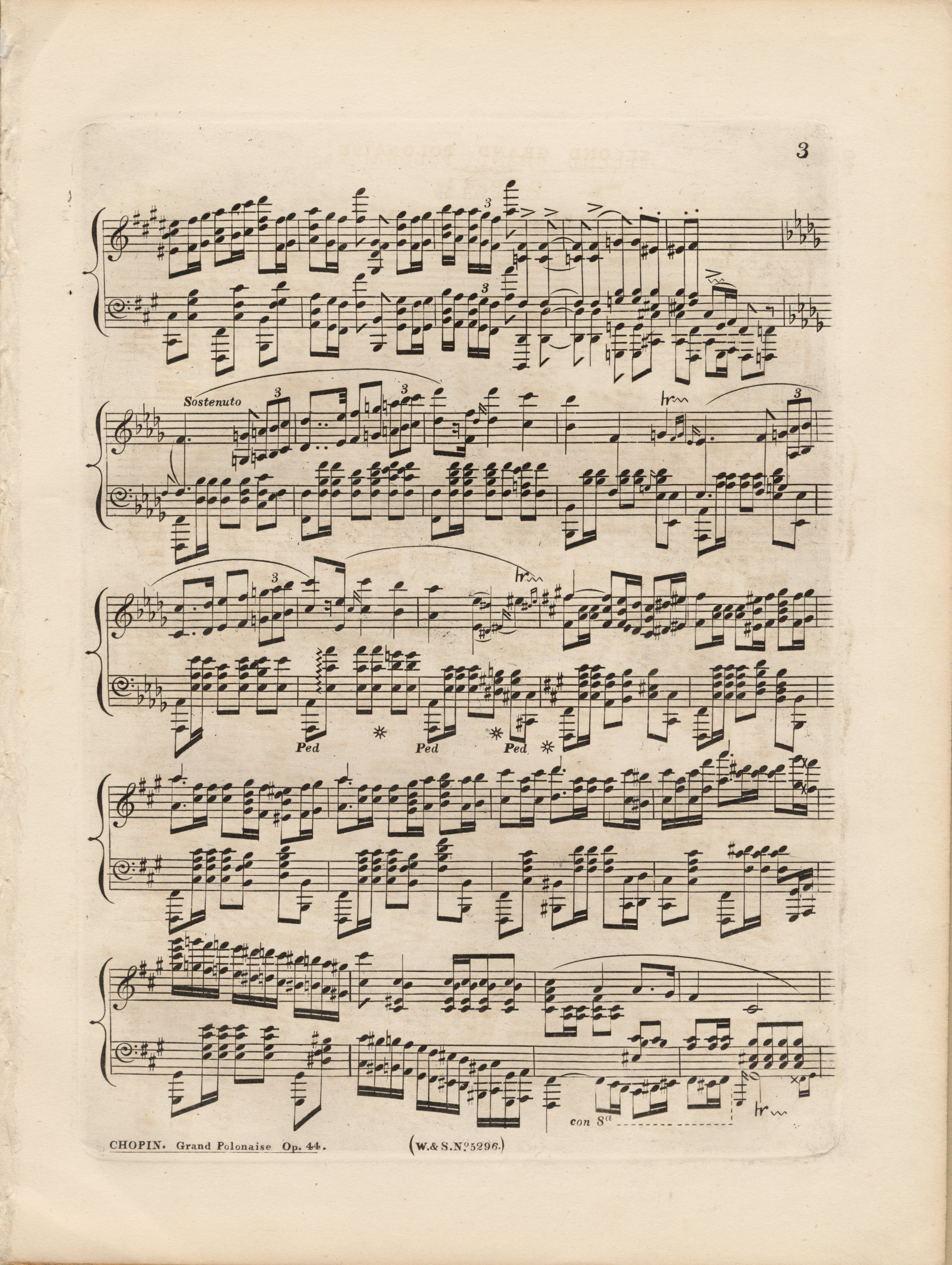



An arpeggio preceded by a grace note at the pitch of the bottom note of an arpeggiated octave or chord was an ornament Chopin would willingly use – cf., e.g. the Sonata in B minor, Op. 35, I mov., b. 61, 169, 207, the Concerto in F minor, Op. 21, II mov., b. 17 (as well as 75) or the Andante spianato, Op. 22, b. 48. However, the notation of those ornaments would often be distorted by engravers due to the following features of the Chopinesque notation:
minor, Op. 35, I mov., b. 61, 169, 207, the Concerto in F minor, Op. 21, II mov., b. 17 (as well as 75) or the Andante spianato, Op. 22, b. 48. However, the notation of those ornaments would often be distorted by engravers due to the following features of the Chopinesque notation:
- gradually, over the years, wavy lines were being simplified in his autographs to the form of vertical curved lines;
- those marks were put either directly before a chord or before the preceding grace note;
- in principle, Chopin would not use conventional little slurs running from the grace note to the main note (octave, chord).
Consequently, in the editions we can find various combinations of such grace notes, curved lines and wavy lines, the actual meaning of which has to be guessed on a number of occasions, which does not always bring unequivocal results. In the Polonaise the problem concerns b. 27, 29, 31, 33 and analog. (b. 53-59, 103-109, 286-292). Pursuant to the General Editorial Principles, p. 5a, wherever the meaning of the curved line is clear, we reproduce it in our transcriptions as a common wavy line.
In the discussed bar the sources differ only in terms of graphics – a wavy line before the grace note in GE and a vertical curved line before the octave in FE. To the main text we adopt the order of marks of FE, which is more natural in this context.
Compare the passage in the sources »
category imprint: Interpretations within context; Differences between sources; Source & stylistic information
issues: Arpeggio – vertical slur
notation: Ornaments

